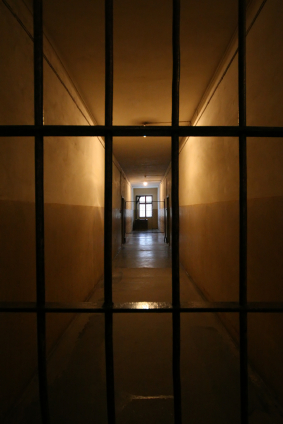A defendant sentenced to federal prison is screened for placement into either a minimum, low, medium, or high security facility in the Bureau of Prisons (BOP). The person’s placement is determined by his or her security score from the SENTRY computer system.
The security score is determined by the following factors:
- Voluntary surrender. (The defendant transported himself to the facility, rather than being taken by the US Marshall.)
- Severity of offense.
- Criminal history score from the Pre-Sentence Report (PSR).
- History of violence.
- Escape attempts.
- Detainer. (Charges pending in state or federal court, or an immigration hold).
- Age.
- Education. (Whether the prisoner has a high school education or GED.)
- History of substance abuse.
The security score is generated by these factors, and inmates are assigned according to the following rules:
- Minimum security facility: 0-11 points for men, 0-15 points for women.
- Low security facility: 11-15 points for male prisoners, 16-30 points for females.
- Medium security: 15-23 points for men. There are no medium security facilities for women. Women presumptively are assigned to low security federal prisons, unless their security score is too high.
- High security federal prison: any male prisoner with 24 or more points, any woman with 31 or more points.
The specifics for these rules are found in the BOP’s Program Statement P5100.08.
Once assigned to a minimum, low, medium, or high security federal prison, the inmate also gets assigned a custody level.
The custody level is an additional classification for a prisoner by the BOP that controls the prisoner’s housing, participation in work release, and permission to leave the facility. These are the BOP custody levels:
Community. An inmate who is assigned a community custody level is eligible for the least restrictive housing, including housing which is technically outside the facility’s perimeter. These inmates may also participate in work release programs with minimal supervision, and other programs outside the facility provided they are eligible for those programs.
In. The “in” designation means a prisoner must live in housing with all other inmates. He cannot reside outside the perimeter of the prison facility. A prisoner with an “in” custody level cannot participate in any work release program, and may work only inside the facility.
Out. A custody level of “out” allows the prisoner to participate in work release. However, the prisoner is required to check in with staff every two hours while outside the facility. A person with an “out” designation may reside in less secure housing.
Maximum. These prisoners are presumptively a risk of assault, riot, escape, or seriously disruptive. While they may participate in work assignments inside the facility, the prison staff has maximum control of movement.
The “community” custody level is available only to inmates in low security federal prisons. That means the prisoner must have a security score of 0-11 points if male, and 0-15 points if female.
The “out” custody level is available to inmates in low and medium security federal prisons. Placement in a low security prison is possible for males with 12-15 points and females with 16-30 points. Males with 16-23 points are assigned to medium security facilities. All women with 16-30 points are assigned to low security facilities.
An “in” custody level is possible for low and medium security facilities, too. And so, just because the security level is low or medium does not mean that the inmate is entitled to an “out” custody level.
The “in” custody level can be applied to inmates in high security prisons. Men with security scores of 24 or more points are assigned to high security federal facilities, as are women with 31 or more points.
The “maximum” custody level is available to prisoners only in high security federal prisons.
The BOP frequently reviews each inmate’s custody level to determine whether it should increase or decrease. No inmate is entitled to a custody level, and his behavior can negatively or positively impact the custody level.



















